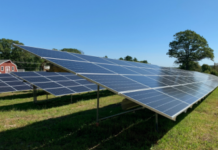WASHINGTON – A coalition of health and environmental advocacy groups filed suit yesterday against the U.S. Environmental Protection Agency, challenging the agency’s refusal to adopt the stricter ozone standards urged by its own scientists.
Meanwhile, two cities and 13 states – including Rhode Island – filed a similar challenge to the smog standards the EPA adopted in March. The attorneys general of Rhode Island, Massachusetts, California, Delaware, Illinois, Maryland, Maine, New Hampshire, New Jersey, New York, New Mexico and Oregon were joined in that suit by the Pennsylvania Department of Environmental Protection, the District of Columbia and the City of New York. Connecticut also has joined the multistate suit.
The parallel lawsuits – both filed yesterday in the U.S. District of Appeals for the District of Columbia – follow a multistate petition to the U.S. Supreme Court, filed on April 2, that requested a court order forcing the EPA to rule on whether the agency will regulate motor-vehicle greenhouse gas emissions. (READ MORE)
More recently, EPA Administrator Stephen Johnson was grilled by the U.S. House Committee on Oversight and Government Reform, which last week asked why he chose to overrule his agency’s Clean Air Scientific Advisory Committee. He told lawmakers he simply disagreed with the recommendations, according to the Associated Press.
Appearing with Johnson before the House panel was Rogene Henderson, leader of the EPA advisory committee, who told lawmakers: “Policymakers wandered into science, and they did not do it well … willful ignorance triumphed over sound science.”
The clean-air advisory panel had urged that the EPA lower its ozone limit from the previous 84 parts per billion to a new limit of 60 to 70 ppb.
Instead, the agency chose a 75 ppb standard, “leaving asthmatics, young children, the elderly and others at greater risk for lung and heart disease than the standard recommended by health experts,” the advocacy groups contend. Their lawsuit was filed by public-interest law firm Earthjustice, on behalf of the American Lung Association, the Natural Resources Defense Council, the Environmental Defense Fund, the National Parks Conservation Association and the Appalachian Mountain Club.
“EPA officials ignored the advice of their own scientists when they chose these deficient standards, but they can’t ignore the law,” David Baron, the Earthjustice lawyer who filed the lawsuit, said in a statement today.
“The Clean Air Act requires EPA to adopt standards strong enough to protect our lungs and our environment,” Baron said. “We’re fighting to make sure that happens. Stronger standards could save thousands of lives, by some estimates.”
Ground-level ozone pollution – associated with the brownish, ground-skimming haze known as smog – is linked to premature deaths from heart and breathing disorders, as well as thousands of visits per year to the nation’s emergency rooms and tens of thousands of asthma attacks.
“Ozone pollution threatens breathing for millions of Americans, especially children, the elderly and people with lung disease including asthma,” said Bernadette A. Toomey, president and CEO of the American Lung Association. “The EPA’s decision to disregard the overwhelming evidence and the advice of respected experts is a decision that we could not allow to go unchallenged.”
The groups’ lawsuit also challenges the EPA’s failure to adopt a separate growing-season ozone standard – recommended by its own scientific advisory panel and the National Park Service – to protect crops, forests and wildlife from ozone damage.
“Visitors to national parks throughout the country can see ugly scars on plants and trees caused by ozone pollution,” said Mark Wenzler, director of clean air and climate programs for the National Parks Conservation Association. “The Administration had an opportunity to heal some of this damage, but instead followed a familiar pattern of siding with big polluters over clean air in our parks.”
The seasonal standard had been opposed by the White House Office of Management and Budget, which oversees government regulation. Documents show that President George W. Bush intervened on the OMB’s behalf just hours before the rule was announced, the AP said.
“White House political science trumped sound science and the law in setting EPA’s ozone standard,” said John Walke, clean air director for the National Resources Defense Council. “We must now turn to the courts to enforce the law that EPA and the president refused to uphold.”
Forty-two percent of the U.S. population lives in communities with unhealthful air, the Lung Association said this month in its 2008 State of the Air report. The annual report was a “sobering snapshot,” Clean Air Watch President Frank O’Donnell told Bloomberg News at the time, adding: “We have a very long way to go before we can declare we have cleaned up the air.”
Information about ground-level ozone and other air-pollution issues, including county-by-county data on ozone levels, is available from the U.S. Environmental Protection Agency at www.epa.gov/groundlevelozone.
Additional information about ozone pollution and its effects is available from the American Lung Association at www.LungUsa2.org, while the Lung Association’s recommendations to the EPA are posted at www.CleanAirStandards.org.
Earthjustice is a public-interest law group based in Washington, D.C. Additional information, including a copy of the public-interest lawsuit it and other nonprofits filed yesterday in the U.S. Court of Appeals for the District of Columbia Circuit, is available at www.earthjustice.org.












